In the previous rounds we saw complications that were often bizarre. Today, especially the two routine players opted for clearer, more strategic paths. This yielded Jan Timman his first full point against Jorden van Foreest.
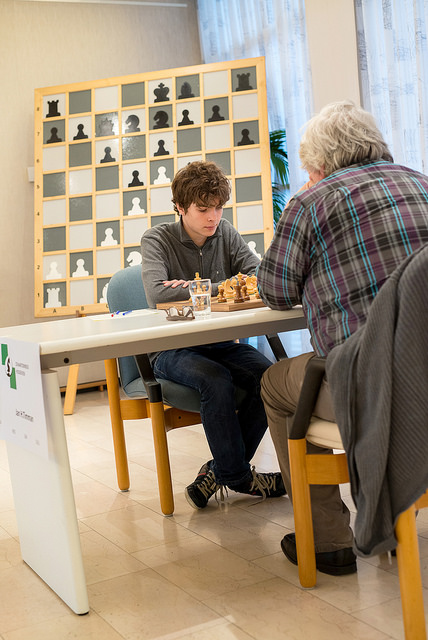
Photo: Frans Peeters
Van Foreest - Timman
1.e4 c6 2.d4 d5 3.e5 Bf5 4.Nf3 e6 5.Le2 Nd7 6.0–0 Ne7 7.Nbd2 h6 8.c3 Qc7
Instead of 8...Ng6 from the first game, after which things got complicated right away. ‘Too Jobava-like’, Timman said. He now opts for clear lines.
9.Re1 c5
‘White’s 9.Re1 is good against ...f7-f6 and ...g7-g5, but not against this move’, Timman explained.
10.Nf1 Nc6 11.Ng3 Bg6 12.Le3 Be7 13.a3
Timman criticized this move: ‘...c5-c4 will come anyway.’
13...c4 14.Nd2 0–0–0
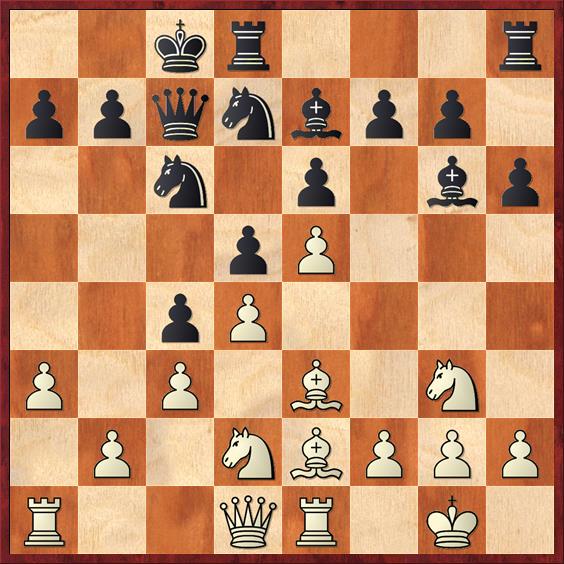
In the commentary room, Dimitri Reinderman called this ‘a remarkable move’. Everything depends on whether White can break with b2-b3 here.
15.f4
15.b3 cxb3 16.Nxb3 might have been a more practical choice. The play is more open, and even though the white pieces are not yet well positioned to carry out an attack on the queenside, it may just happen sometime. On the other hand, if Black gets a firm hold of c4, that could also work against White.
15...f5
Black fixes the position, on the queenside as well as the kingside. After that he can attack along the g- or the h-file.
16.Rb1
Afterwards, 16.exf6 was suggested, in order to give the game a turn. ‘But Black takes back with the pawn, plays ...f6-f5, and puts his knight on e4’, Timman said.
16...Nb6 17.Ngf1
17.b3 does not work very well here either: 17...cxb3 18.Nxb3 Nc4 19.Bxc4 dxc4 20.Nd2 Na5.
17...Kb8 18.Lf2 Be8!

Now Black controls the entire board. ...g7-g5 is coming, and this bishop can also go to a4. Van Foreest had missed this idea.
19.Ne3 g5 20.g3 Na5 21.Lf3 Ba4 22.Qe2 Rdg8 23.fxg5
Opening the h-file for Black. With hindsight, the players thought the waiting move 23.Kh1 was better, after which it’s not easy to get through.
23...hxg5 24.g4 f4 25.Nef1 Be8 26.Qd1 Bg6
Taking another beautiful diagonal. Timman felt like a fish in water in this position.
27.Ra1 Bd8 28.Qc1 Rh6
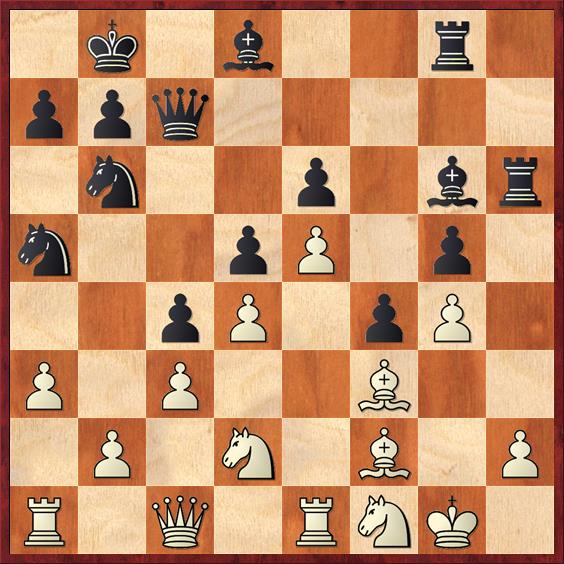
29.Kh1
Timman suggested 29.h4!? here, so that White won’t get busted along the h-file. This would probably have been merely a stay of execution.
29...Rgh8 30.Lg1 Qh7 31.Re2 Rh3 32.Lg2 Rh4 33.Lf3 Rh3
Just repeating the moves for a bit, even though it was Van Foreest who was in time-trouble here.
34.Lg2 Bd3 35.Rf2 Nb3!
Now they are coming from all sides.
36.Nxb3 cxb3 37.Qd1 Nc4 38.Qxb3 Ne3
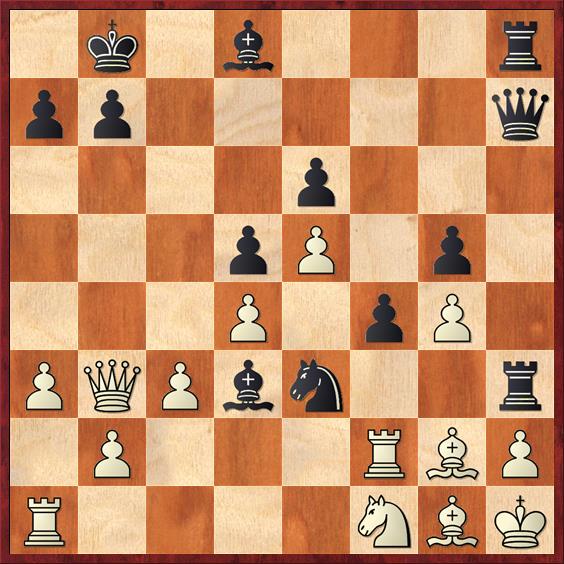
Finally, h2 cannot be defended anymore.
39.Qb4 Nxf1 0–1

Foto: Frans Peeters
Sopiko Guramishvili also decided on a change in strategy. It meant she had to work harder, but it did yield her another full point. It was encouraging for Anna-Maja Kazarian, however, that she was able to keep defending strongly for a long time.
Guramishvili - Kazarian
1.d4 d5 2.c4 c6 3.Nf3 Nf6 4.e3 e6 5.b3
The structural approach. In the first game Miss Tactics had played 5.Nc3 and g2-g4 (in a different move order). Kazarian had probably prepared something against that, but Guramishvili is one step ahead.
5...Nbd7 6.Ld3 b6 7.0–0 Bb7 8.Lb2 Be7 9.Nc3 0–0 10.Qc2 h6 11.Rfd1 Rc8 12.Rac1 Qc7 13.Qe2!
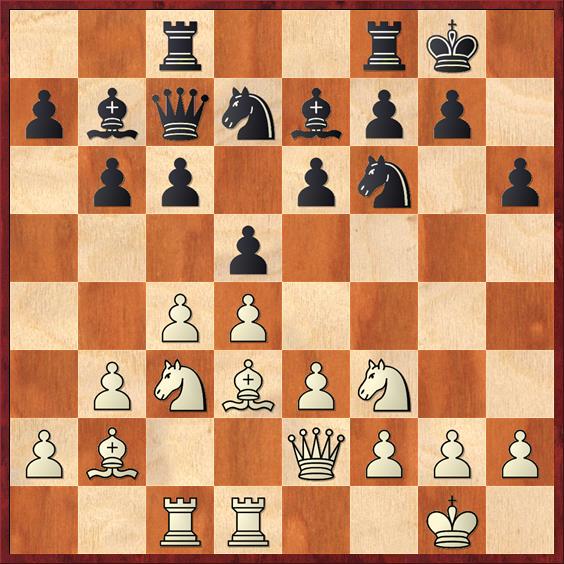
13...Rfd8?
Not good, according to the white player: ‘Normally Black plays 13...Qb8 here. Now I have an advantageous liquidation thanks to the pin along the c-file.’
14.cxd5 exd5 15.Lf5 g6
Putting the bishop on a slightly less favourable square, but this move also slightly weakens her king’s position.
16.Lh3 Bb4
To get better control of e4, but now the white knight becomes powerful on e5.
17.Ne5 Bxc3 18.Rxc3 Qd6
Black wants to untie her pieces with ...Rc7. The violent 18...Ne4 was not a good option, as after something like 19.Rc2 there is no 19...f5 because the pawn on g6 is hanging. But now it is a threat.
19.f3 Rc7 20.Nxd7
Too bad about the active knight, but the direct 20.e4 dxe4 21.fxe4?? is not so good in view of 21...Nxe5.
20...Nxd7 21.e4 Re8 22.Re3
22.Lc1! looked strong as well. Now, for the first time in the match, Kazarian shows her tenacity and she stays in the game for a long time.
22...Nf8 23.e5 Qe7 24.f4 f5 25.g4 Bc8
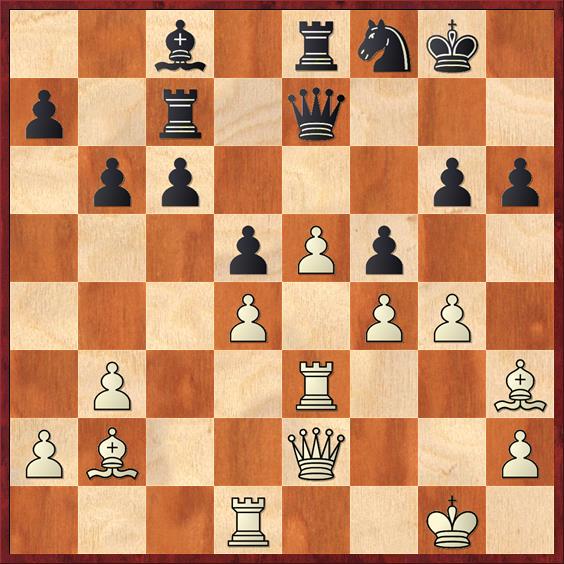
26.gxf5
‘Maybe I opened the position too early’, Guramishvili thought. But how else can White make progress? After something like 26.Rg3 Black reacts with 26...Qf7 and she threatens to take on g4 herself. Now there follows a manoeuvring phase in which White doesn’t really make much headway.
26...Bxf5 27.Bxf5 gxf5 28.Qh5 Qe6 29.Rg3+ Rg7 30.Kf2 Rxg3 31.hxg3 Qg6 32.Qf3 Ne6 33.Rc1 Nc7 34.Qc3 Re6 35.Qd3 h5 36.Rh1 Qf7 37.a4 Rh6 38.Qc2 Qg6 39.La3 Ne8 40.Le7 Rh7 41.Lg5 Rc7
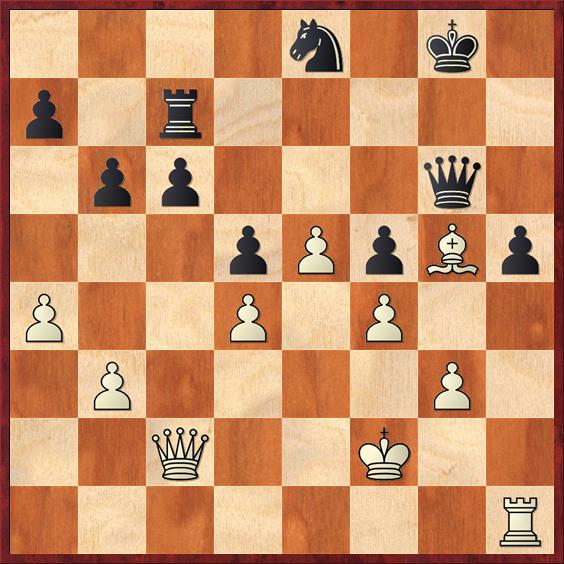
42.g4!
An attractive move. Of course Black cannot take this pawn, but she can hold.
42...Ng7 43.gxh5 Nxh5 44.Rg1 Rg7 45.Qd1
‘I thought that around here Black was more or less in zugzwang’, Guramishvili said, ‘but it’s not that simple.’
45...Kf7 46.Ke3 Ke6 47.Qc1 Qe8 48.Qa3
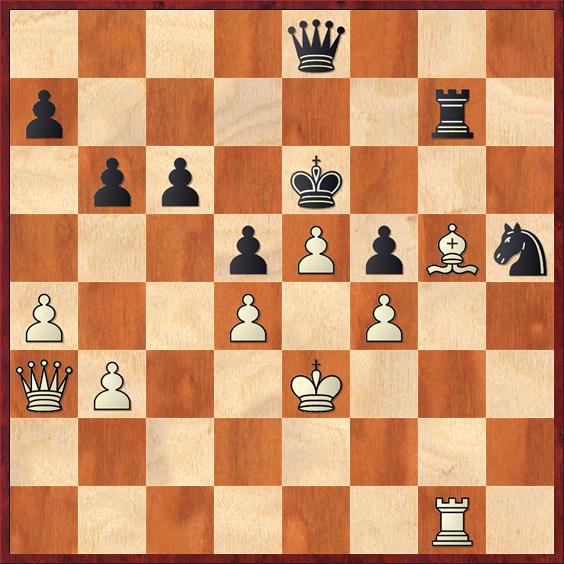
48...c5!
Guramishvili showed appreciation for this move. ‘An interesting move, giving a pawn for counterplay.’
49.dxc5 d4+ 50.Kf2
50.Kxd4?? Nxf4! is entirely wrong.
50...Qc6 51.b4?!
With the subtle 51.Qa2! White could maintain an advantage, for example: 51...Qxc5 52.b4+ Qd5 53.Qxd5+ Kxd5 54.Rh1 Rh7 55.Rh4 and the passed e-pawn is a great tie for Black.
51...bxc5
Condemned by Guramishvili: ‘Better was 51...Qd5 to keep the tension, with ...d4-d3 etc.’
52.bxc5
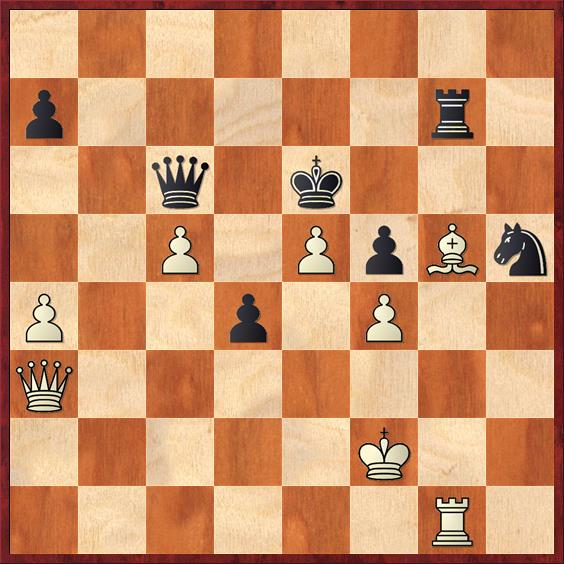
52...Rb7?
Again, 52...Qd5 was the best chance.
53.Rc1!
Perhaps even stronger was 53.Re1! followed by 54.Qa2+, a queen swap, and then advancing the e-pawn.
53...Rd7?
‘This was a very bad move’, Guramishvili said. Now White wins by force. 53...Ng7 was necessary, when White has to try 54.Lh6 or 54.Qd3 (54.Qh3? Rb2+).
54.Qb3+ Qd5
54...Rd5 55.Rh1.
55.Qb8! Qa2+ 56.Kg1 Qd2
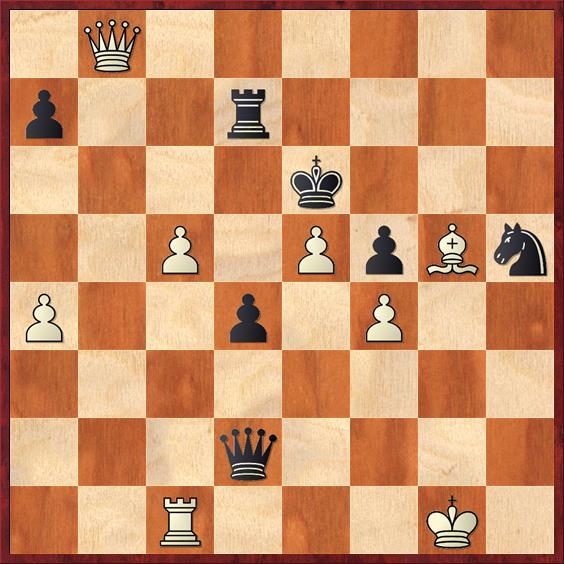
57.Qg8+
It looks dangerous, but the black king is already caught in a mating net.
57...Rf7 58.Qe8+ Kd5 59.Qa8+ Rb7
59...Ke6 60.Qc6#.
60.Qxb7+ Ke6 61.Qb3+ Kd7 62.c6+
And Kazarian resigned, right before the mating move.

 .
. 






















